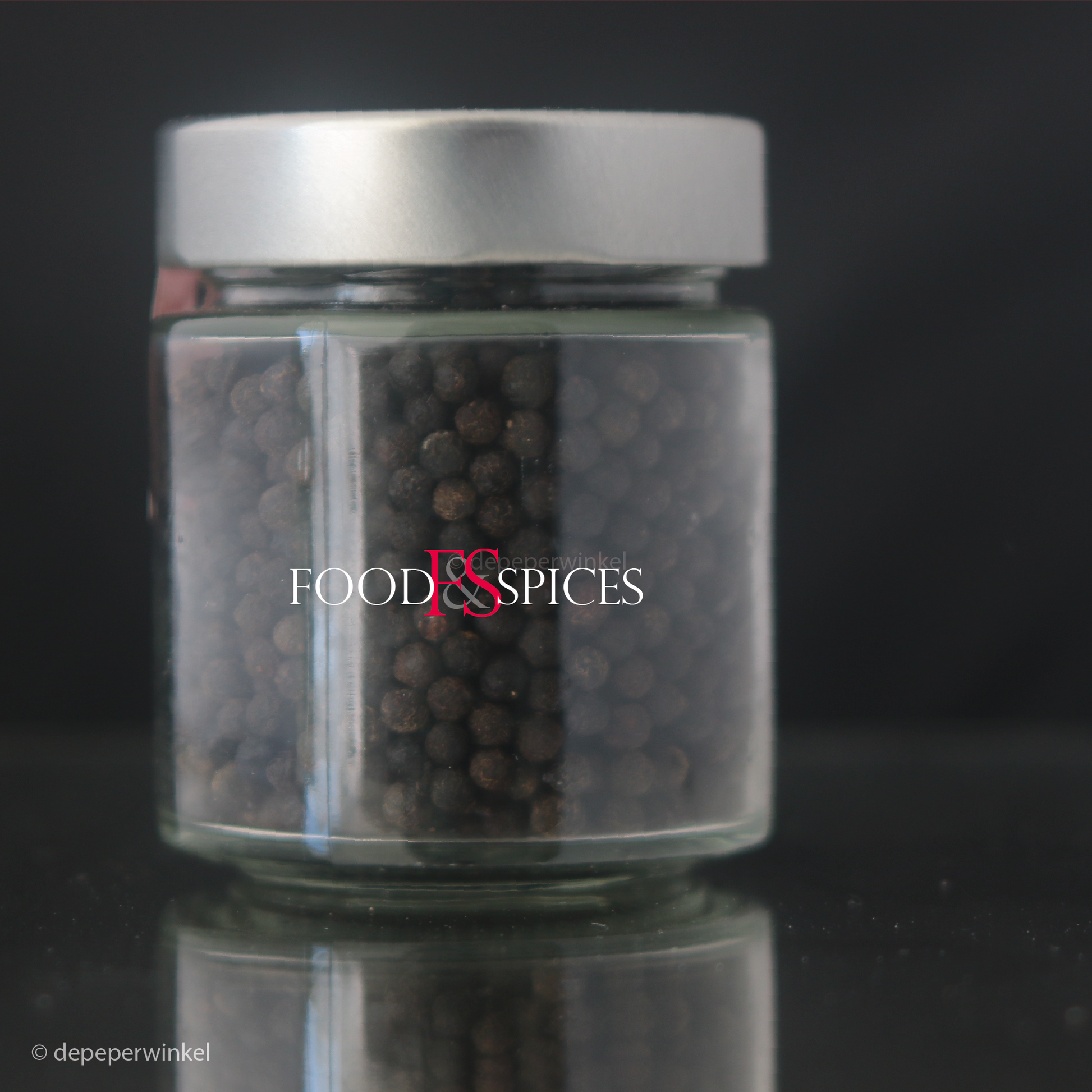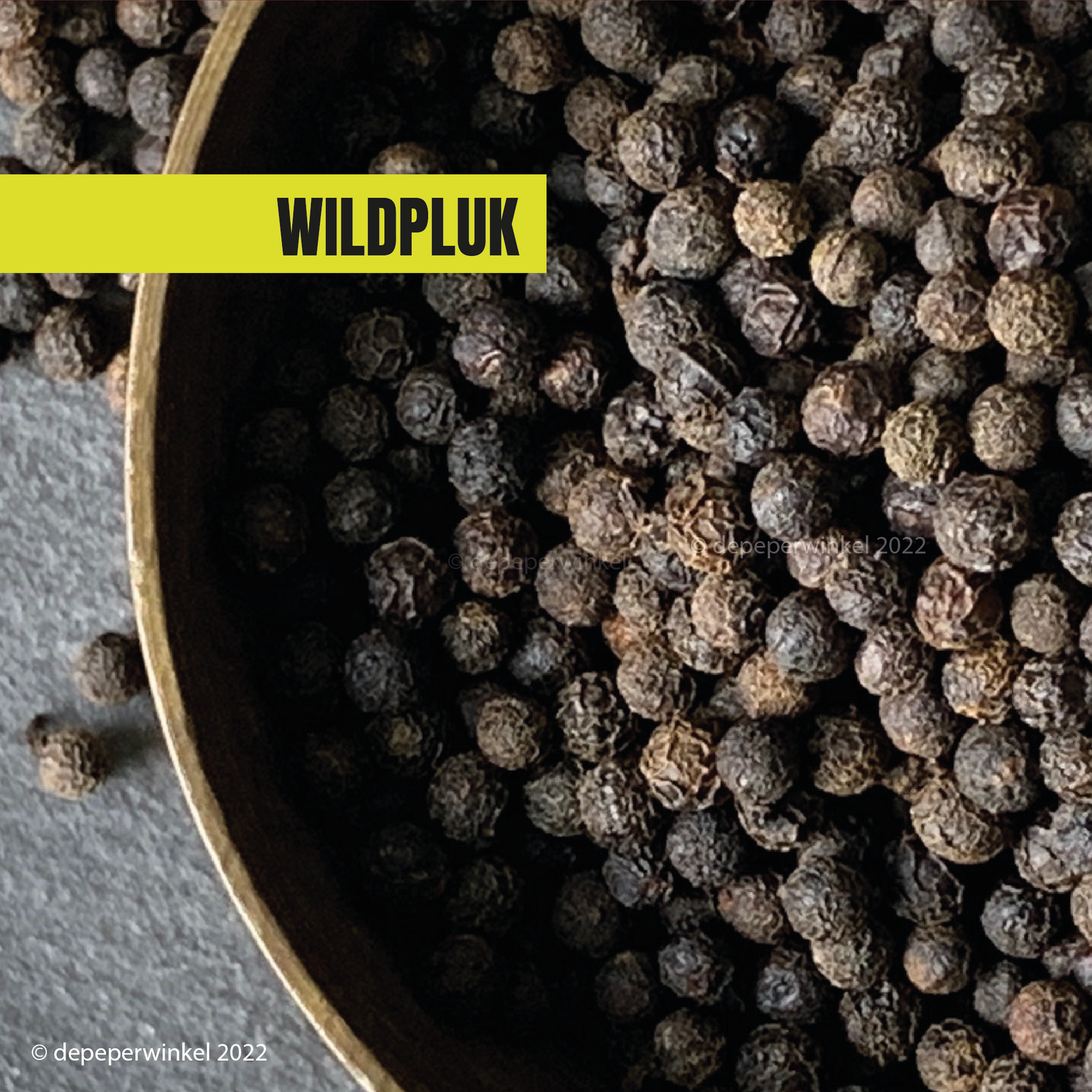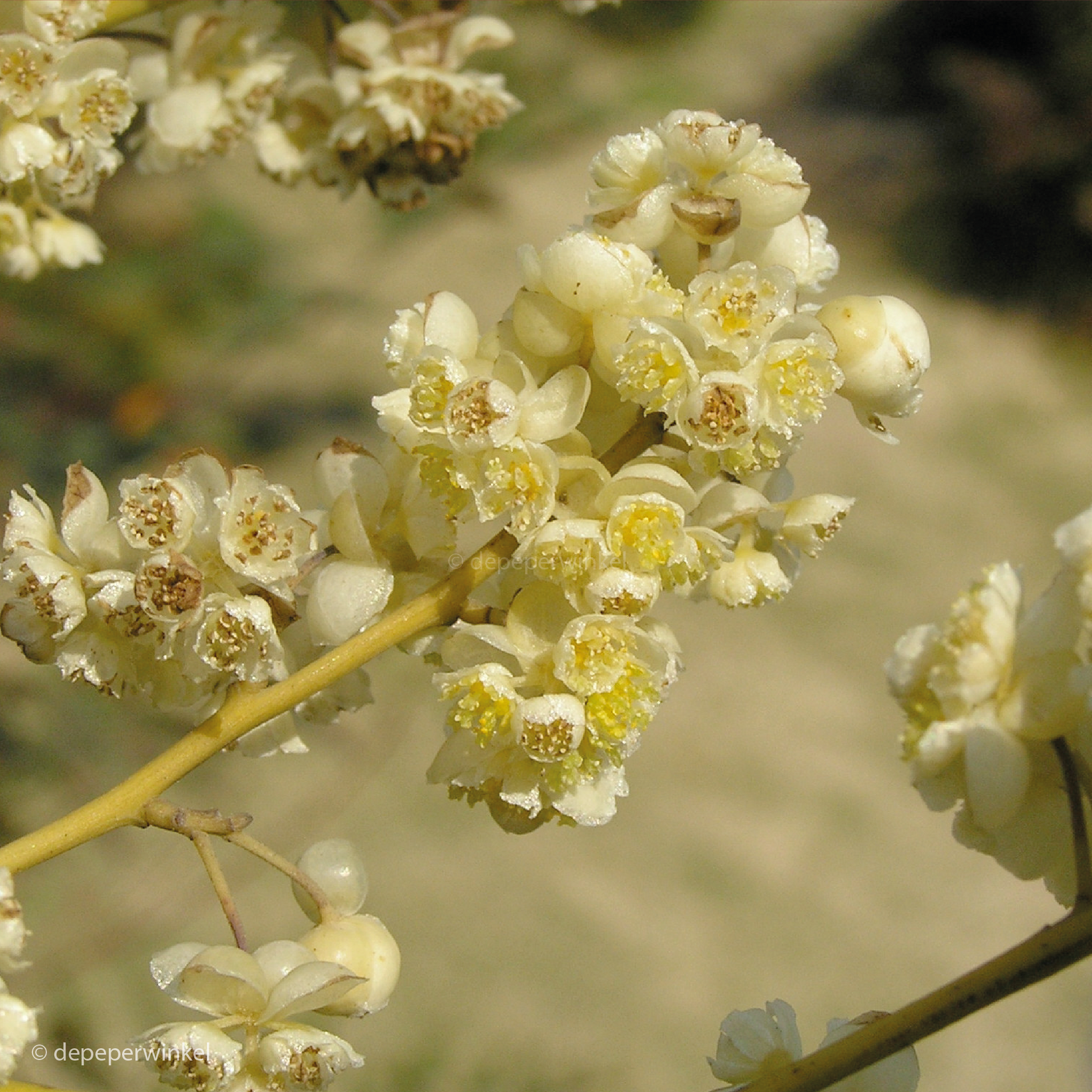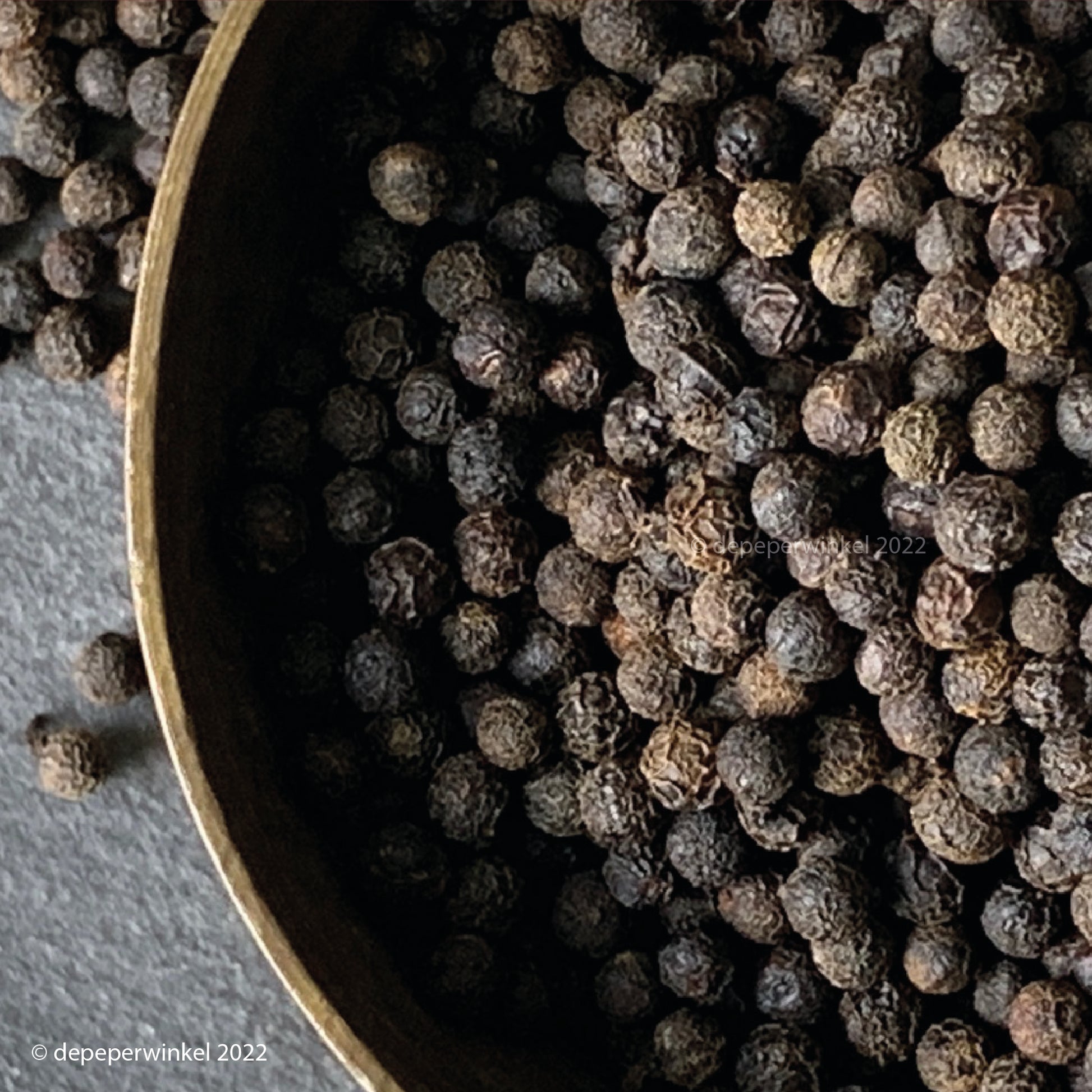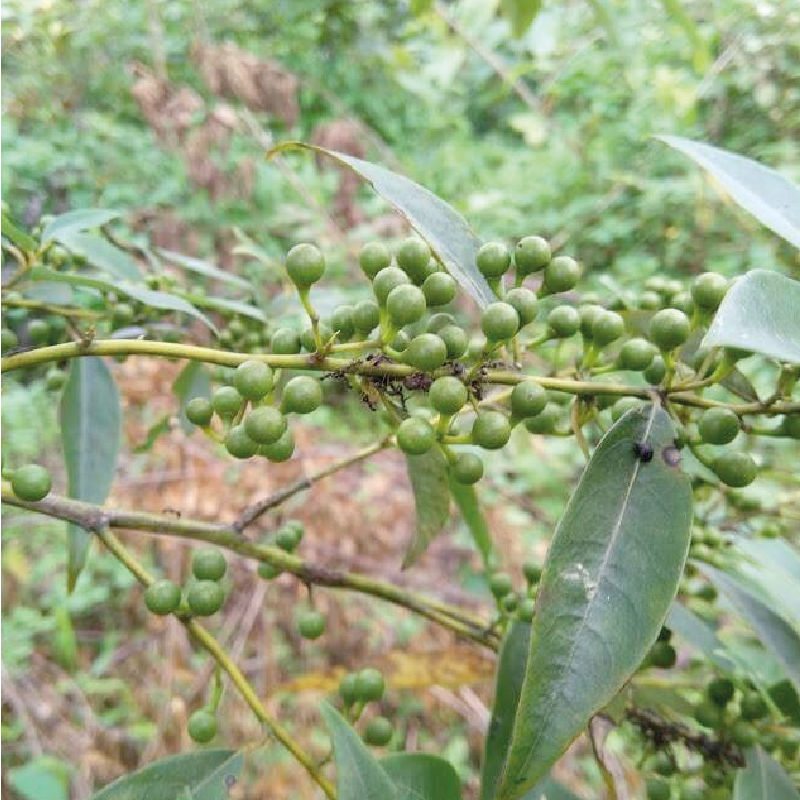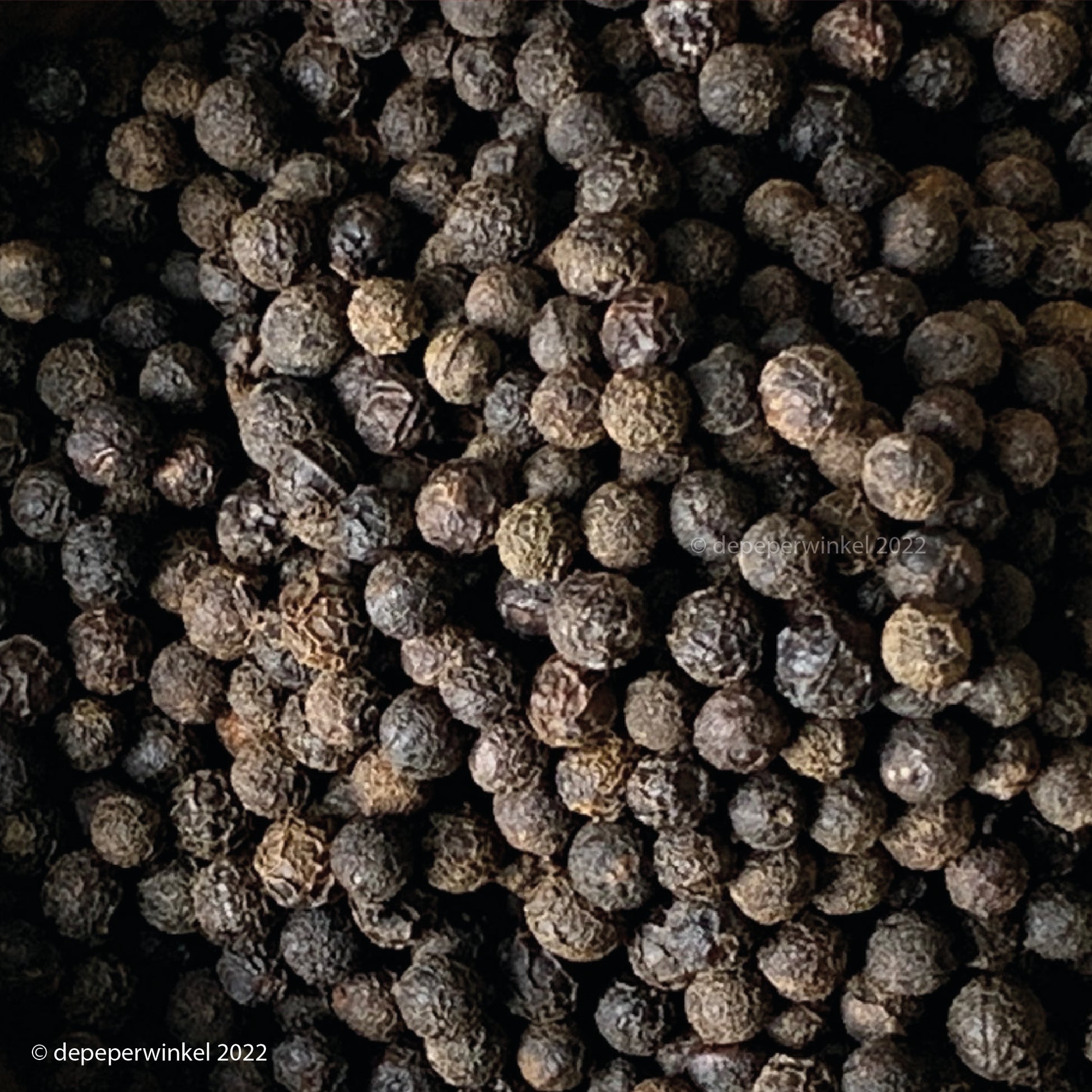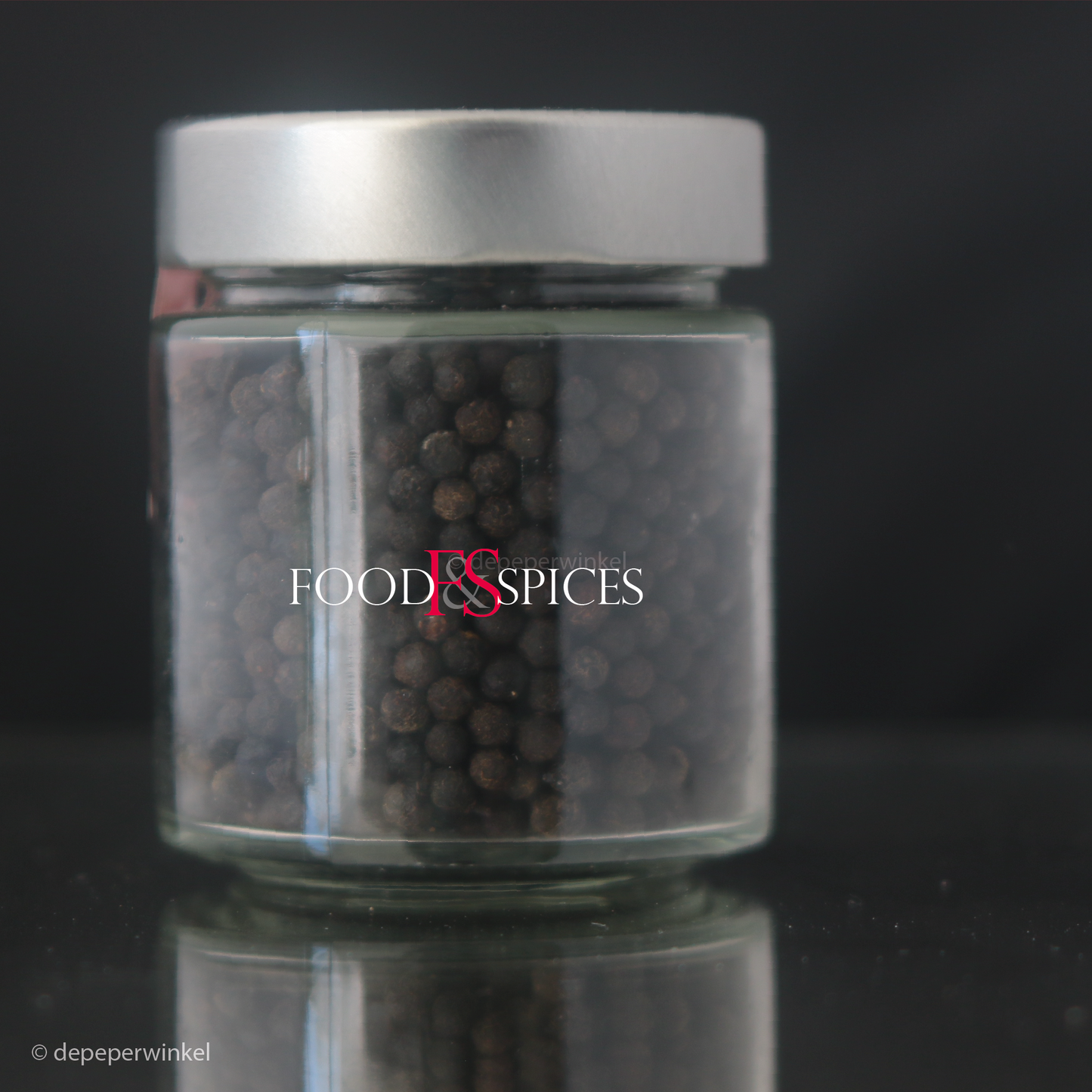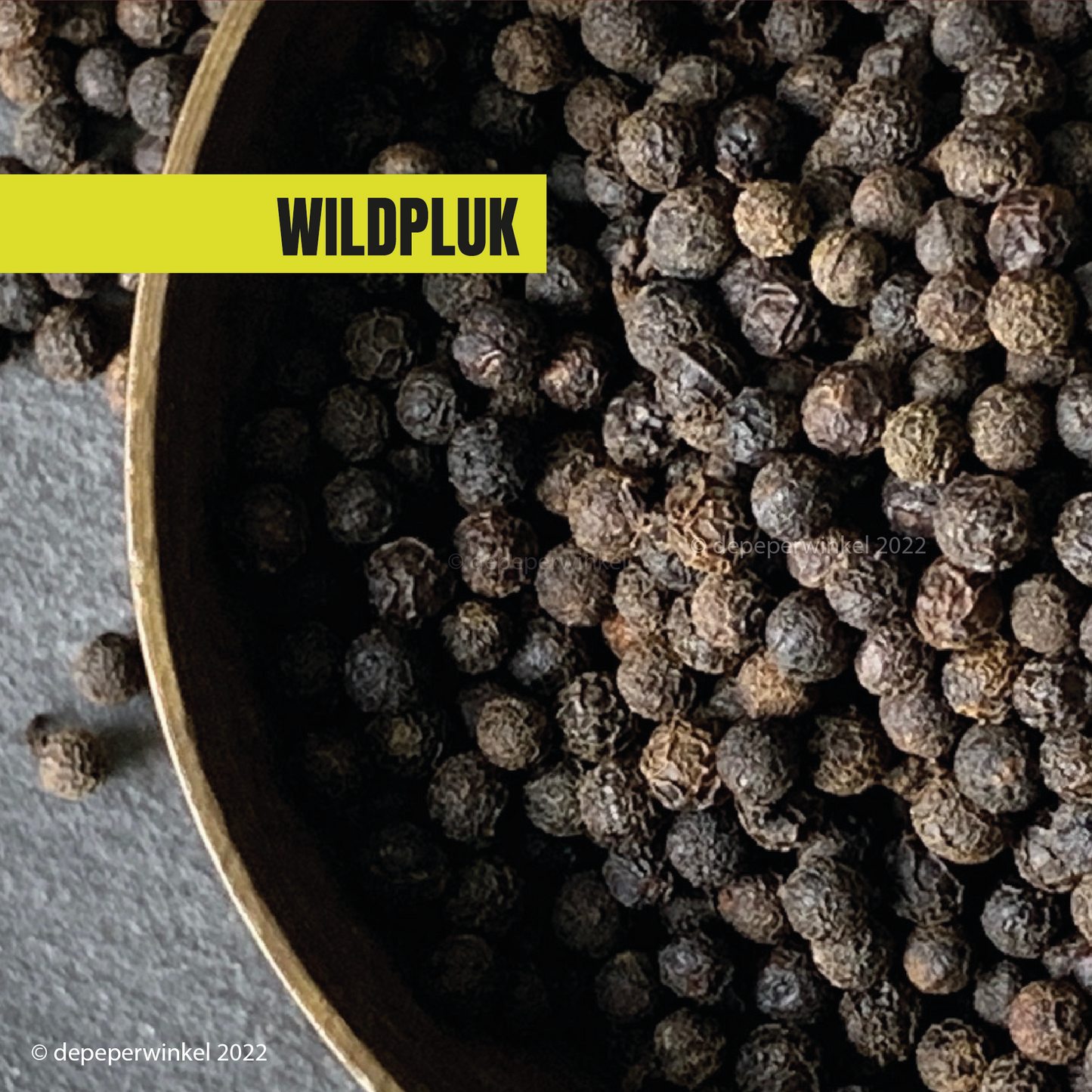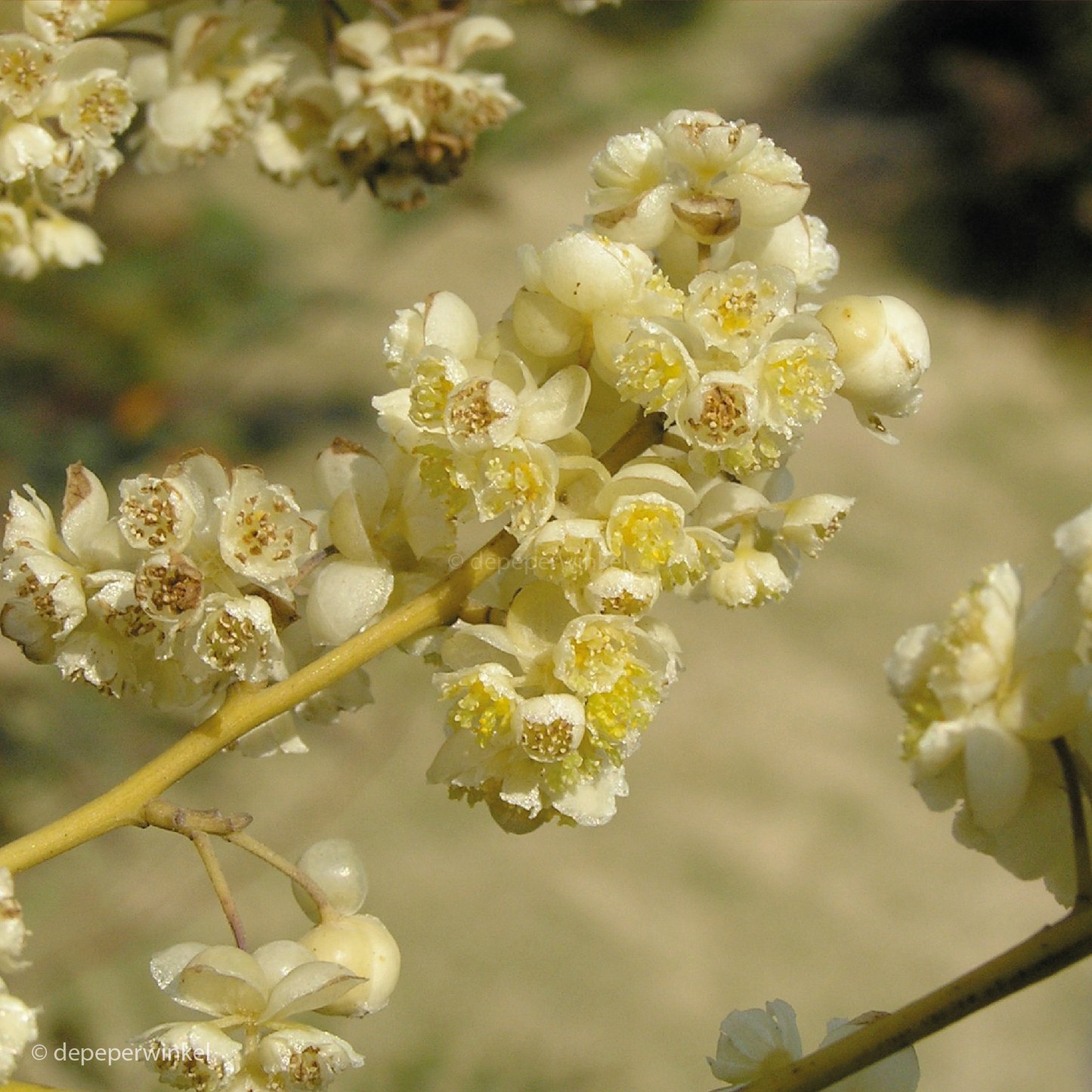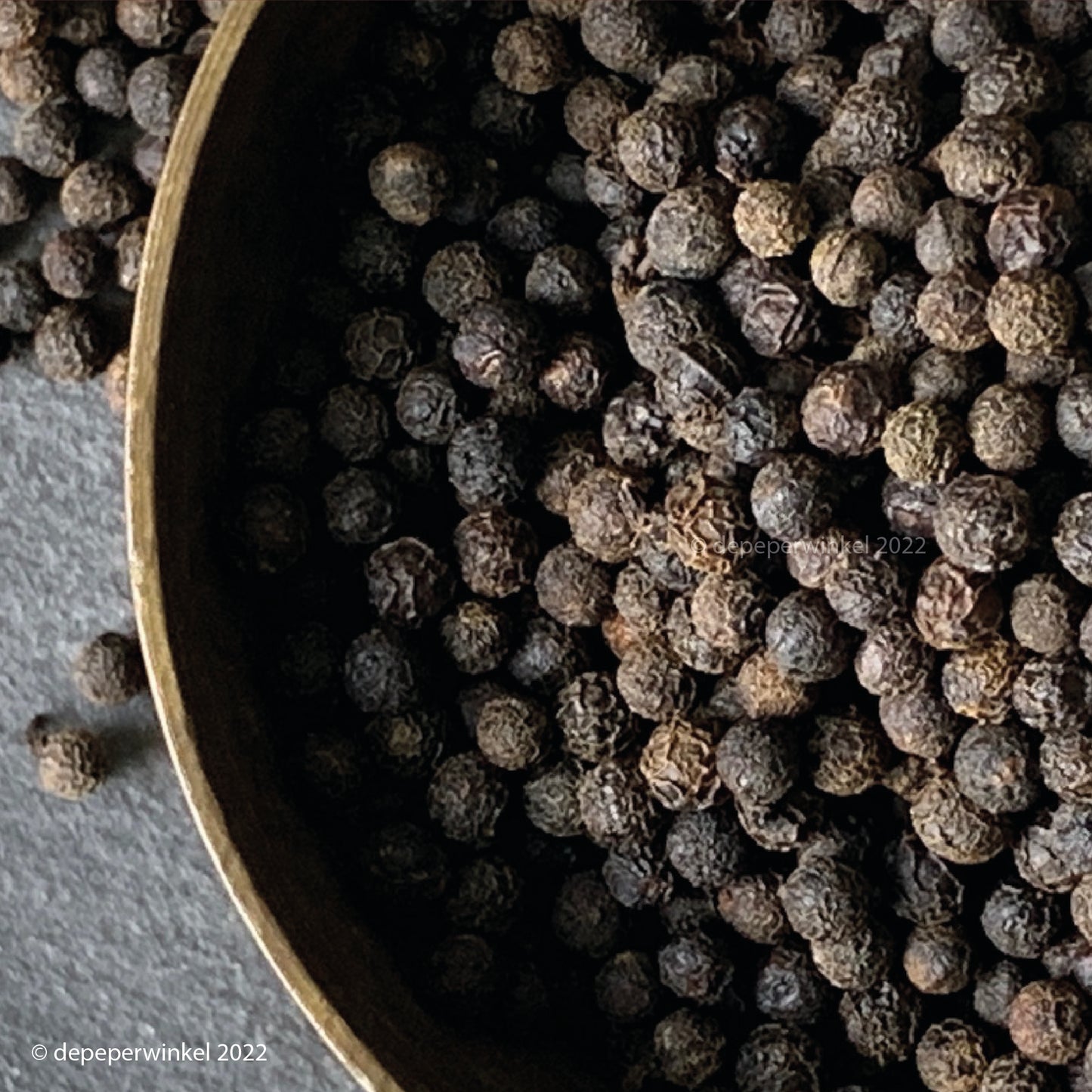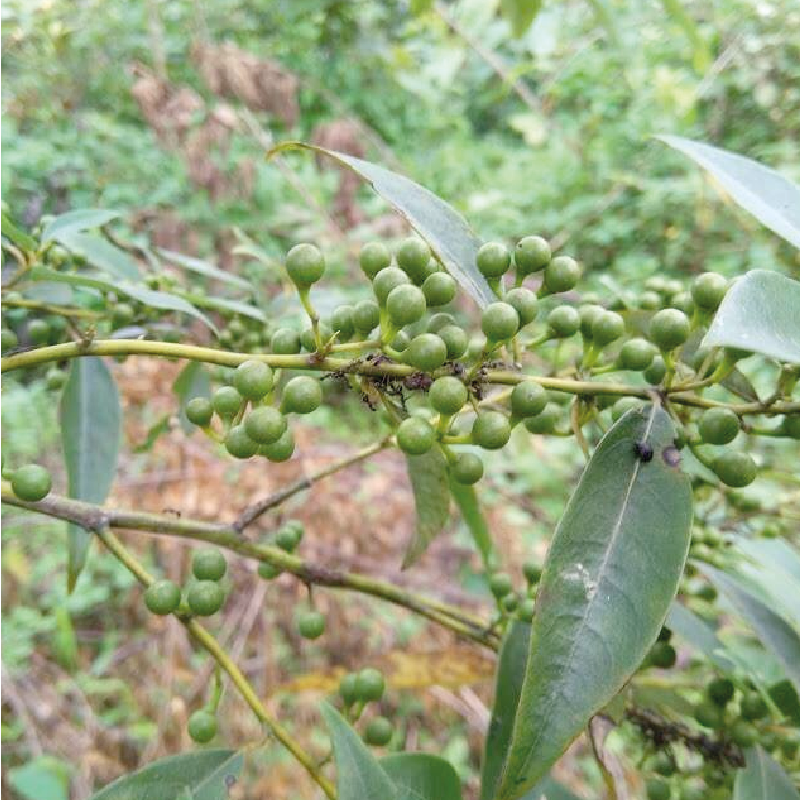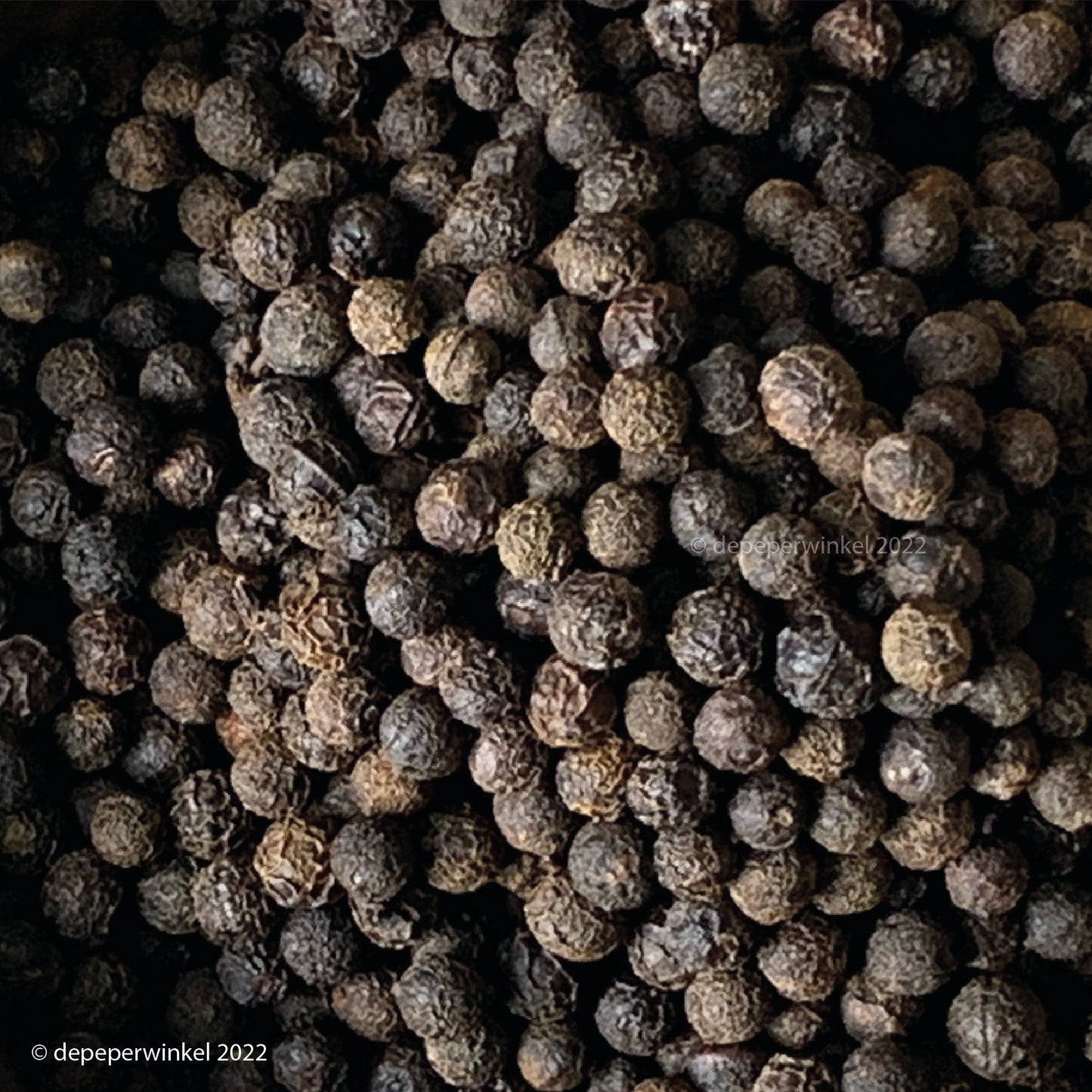depeperwinkel
Maqaw (magao) - pheasant pepper
Maqaw (magao) - pheasant pepper
In stock
Unable to load availability for pickup
The dried berry of the Litsea cubeba is sometimes called a pepper berry, but it is not, as it does not contain any pungent substance. Nevertheless, it is considered a pepper and has traditionally been used as such, which is why it has been included in the Ark of Taste by Slowfood.
This Litsea cubeba is also called lemon pepper, not to be confused with the spice mix that is sold as a ready-made mix for fish dishes.
The Litsea cubeba is a 5-8 meter high tree or shrub with light yellow flowers. In the summer the 5 mm large fruits develop, which are picked ripe or collected, and dried. The red fruits then color rusty brown to black, just like pepper.
The name maqaw - 馬告 - comes from Taiwan where the fruits have been used as a spice for thousands of years by the Atayal and Saisyat, two indigenous peoples there. It means "full of vitality". It is also called the 'black pearl'.
The maqaw grows at altitudes of 100 to 1,500 metres, in Taiwan, the Himalayas of northern India, Thailand, Nepal and Vietnam, in southern China and in Borneo (Sarawak and Kalimantan), where the spice is a specialty, as in Taiwan.
Our maqaw does not come from Taiwan, but from Quang Ngai Province in Vietnam, where it is called sả rừng (lemongrass), and where it is picked in July by the Hre and K'dong ethnic minorities in the mountainous districts of the province. Incidentally, the general Vietnamese name is màng tang.
Smell and make
The berries are rich in essential oils, which provide a warm, pleasant scent and taste experience.
They look like pepper berries, but have a flavor that contains hints of pepper, lemongrass, thyme, ginger, and citrus fruits. The combination of citral and citronellal provide the citrus notes, the alpha and beta pinene for a cedar flavor, and eucalyptus for a woody, light camphor flavor.
Although the flavour palette is very similar to that of siltimur, the taste is clearly distinctive, in siltimur the aroma of cedar dominates, in maqaw that of grapefruit.
In many publications the taste is characterized as pleasantly peppery with lemongrass notes, the first is certainly true, but as far as lemongrass is concerned, the maqaw certainly loses out to the African mbongo
These are the main essential oils in the fruit:
- citral, as in lemon and grapefruit
- citronellal, lime leaf (kafir), as in lemongrass and juniper berry
- β-pinene, woody pine (cedar) scent, as in cumin, pine (cone), juniper and hemp,
- eucalyptol (cineol-1.8), spicy, mint flavor, as in sage and rosemary
- geraniol, rose scent
- safrole, sweet spicy with aniseed notes
Combines excellently with cardamom, bay leaf, mint, liquorice, thyme, cinnamon and lemon.
Usage
Use maqaw as a seasoning for red and white meat (pork for example), duck, fish or shellfish. Also use in desserts, cookies and in or in combination with chocolate. A few berries are enough for a delicious decaffeinated tea. If you want to make Taiwanese tea with it, use 2 grams per 2.5 dl.
In Quảng Ngãi, snails are steamed with maqaw, instead of lemongrass, which is more common in Vietnam. Another specialty is a water buffalo stir-fry, with garlic, maqaw and a tiny bit of sugar.The thinly sliced water buffalo meat is rubbed with a rub of these spices, then stir-fried with some finely chopped onion and seasoned with black pepper and some salt.
Maqaw as (pheasant) pepper with fish? Much touted, but you will find that maqaw with fish cannot compete with a simple combination of thyme and lemon peel, or a combination of galangal, lemongrass and kaffir. But try it in mayonnaise and serve it with fish! The secret? The oil in the mayonnaise brings out the flavors of the maqaw - just like rice wine does.
Make this maqaw mayonnaise yourself, using 2-3 grams of maqaw per dl of oil, and finally add some sweet basil leaves for fish.
Maqaw pineapple cakes are cube-shaped or diamond-shaped cakes, with a filling of fresh pineapple. The diamond shape is a traditional motif of the Atayal tribe, who consider it to be the eyes of the ancestors watching over us. The maqaw is incorporated into the filling, and one berry is pressed into the cake, as a 'teardrop'.
Features:
- 100% berries of the Litsea cubeba,
- hand picked in the wild
- origin: Quảng Ngãi, Vietnam
Assortment
- available in glass, stand-up pouch and 10 ml test tube
- larger quantities on request
Gift wrapping
- The jar is available in a tasteful gift packaging, consisting of a cube box filled with black tissue paper
- For an overview of our gift packaging, please refer to the gift packaging section
General advice
- Maqaw is used whole, bruised, or ground.
- the taste can be dominant (citrus-slightly bitter), adjust the dosage accordingly
Save:
- store your kampot pepper in a closed container
- preferably store in a dark, dry and cool place
- at least good until august 2026 (08-2026)
- This expiration date is an indication
Do you want to know what maqaw tastes like?
Batch number
The batch number helps us trace which supply an item originates from. It is stated on the packing slip and the invoice
